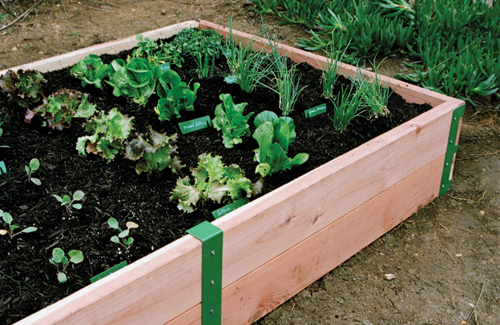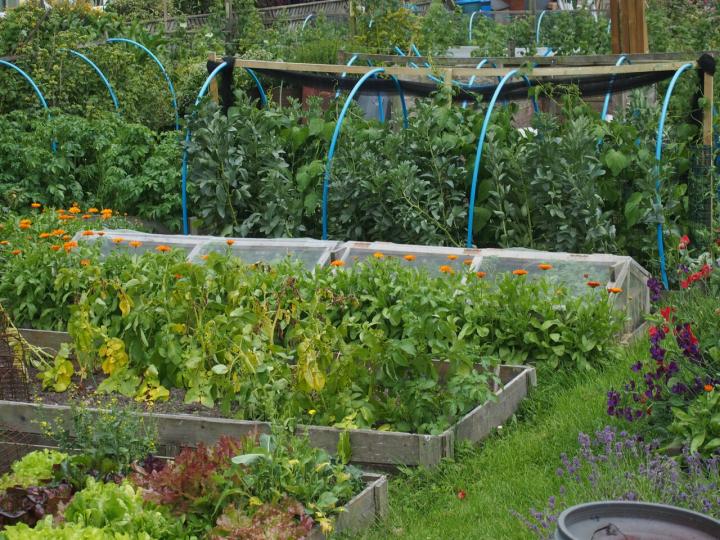Transform Your Backyard with Homestead Gardening
Transform Your Backyard with Homestead Gardening
Blog Article
Discover Necessary Tips for Effective Gardening Techniques and Practices
Gardening, typically viewed as an easy leisure activity, incorporates a variety of methods and techniques that can significantly influence the result of your initiatives. By prioritizing crucial components such as dirt health and wellness, efficient sprinkling techniques, and appropriate plant option, garden enthusiasts can develop a successful ecological community that sustains dynamic growth. Moreover, recognizing the nuances of bug management and seasonal upkeep can additionally enhance productivity. Yet, numerous enthusiasts ignore critical details that can make or damage their gardening success-- exploring these forgot aspects may disclose the trick to growing a growing yard.
Recognizing Dirt Wellness
Dirt health is an essential aspect of effective horticulture, as it straight affects plant development, nutrition availability, and community balance. Healthy and balanced dirt is characterized by an abundant biodiversity of microorganisms, organic matter, and a well balanced pH level, which together produce an environment for plant advancement.
To recognize soil wellness, one have to consider its physical, chemical, and biological buildings. The structure and structure of dirt impact its ability to preserve wetness and nutrients, while the chemical composition establishes the schedule of important components like nitrogen, potassium, and phosphorus. Routine dirt testing is crucial to examine these factors, allowing garden enthusiasts to make educated decisions pertaining to amendments and plant foods.
Furthermore, promoting biological activity within the dirt is essential for maintaining its health and wellness. Practices such as composting, plant turning, and the use of cover crops can boost microbial diversity, enhance nutrient biking, and lower soil erosion. By focusing on dirt health, gardeners not just enhance plant development but also contribute to a sustainable environment, making sure that their gardening practices are durable and environmentally responsible over time.
Efficient Sprinkling Techniques
Guaranteeing that plants receive the ideal amount of water is important for their health and growth, specifically when combined with a strong foundation of soil wellness (Homestead Gardening). Reliable watering strategies can significantly influence plant vitality, decreasing water wastage and promoting ideal growth
One essential technique is deep watering, which motivates roots to grow much deeper into the dirt, boosting drought resistance. This strategy commonly involves watering much less often however in bigger amounts, enabling dampness to penetrate the origin zone extensively. Timing is likewise vital; early morning is the perfect time to water, as it minimizes dissipation and enables vegetation to completely dry during the day, minimizing condition risks.
Furthermore, employing mulch can assist preserve soil moisture and control temperature, additional helping reliable sprinkling techniques. Using a drip irrigation system can also give targeted moisture straight to the origins, making certain that water reaches where it's most required while preserving sources.
Monitoring rainfall and dirt wetness levels can guide changes in your watering schedule, guaranteeing plants receive consistent hydration without over-saturation. By taking on these effective sprinkling methods, gardeners can promote a successful environment for their plants to grow.
Plant Choice and Positioning
Exactly how can the ideal plant option and critical placement change a yard right into a flourishing ecosystem? When choosing plants, take into consideration aspects such as environment, soil type, and sunshine direct exposure. Homestead Gardening.
Strategic positioning includes setting up plants according to their growth routines and demands. Taller plants should be placed at the back of boundaries to protect against shielding much shorter plants. Furthermore, grouping plants with comparable water and light demands can improve their development and lower competition for resources.
Including a diversity of plants not just adds aesthetic appeal however likewise advertises biodiversity, attracting helpful insects and pollinators. Consider the seasonal changes in your garden; pick a mix of perennials, annuals, and evergreens to make sure year-round interest.
Last but not least, remember to analyze the fully grown size of plants prior to growing to avoid overcrowding and make certain adequate air flow. Thoughtful plant option and tactical positioning create an unified setting, enabling your yard to grow while minimizing difficulties.
Insect and Illness Management
Effective insect and disease monitoring is essential for maintaining a healthy yard community - Homestead Gardening. A positive approach, integrating social, biological, and chemical approaches, can considerably lower the impact of pests and conditions on your plants

Organic controls, such as presenting advantageous insects like ladybugs or predatory mites, can maintain parasite populations in check without hurting the setting. Furthermore, preserving plant health and wellness through correct watering, fertilizing, and pruning will reinforce their durability versus conditions.
When treatment is essential, select targeted chemical therapies, guaranteeing to follow application guidelines to decrease damage to non-target organisms. Constantly prioritize lasting techniques, as they advertise long-lasting yard health and environmental equilibrium. By incorporating these techniques, gardeners can efficiently manage pests and diseases, guaranteeing flourishing plants and an effective yard.

Seasonal Maintenance Practices
In springtime, emphasis on dirt preparation by screening pH levels and adding necessary changes. Frequently examine why not try these out emerging plants for pests and illness.
As summer methods, ensure adequate watering while keeping track of for signs of anxiety or condition. Prune back overgrown plants to urge air flow and lower humidity around foliage. This practice not just enhances plant wellness but likewise advertises flowering and fruiting.
With the arrival of fall, it's time to prepare for winter season. Tidy up dropped leaves and particles to avoid parasite problems, and think about planting cover crops to enhance soil health. This period is also perfect for splitting try this website perennials and growing spring-flowering light bulbs.
Final Thought
Successful gardening hinges on the assimilation of sound practices in soil health, watering, plant selection, parasite administration, and seasonal upkeep. By focusing on dirt screening and microbial variety, utilizing efficient sprinkling strategies, and selecting ideal plants, gardeners can produce thriving communities.
By prioritizing vital aspects such as soil health, effective watering strategies, and suitable plant option, gardeners can develop a thriving ecosystem that sustains lively growth. By prioritizing soil wellness, gardeners not just maximize plant growth but also add to a sustainable ecological community, making sure that their gardening practices are eco liable and durable over time.
Taller plants must be placed at the back of borders to stop shielding much shorter plants. Tidy up dropped leaves and particles to protect against parasite invasions, and consider planting cover crops to improve soil health.Successful the original source gardening joints on the integration of sound methods in soil wellness, watering, plant choice, insect monitoring, and seasonal upkeep.
Report this page